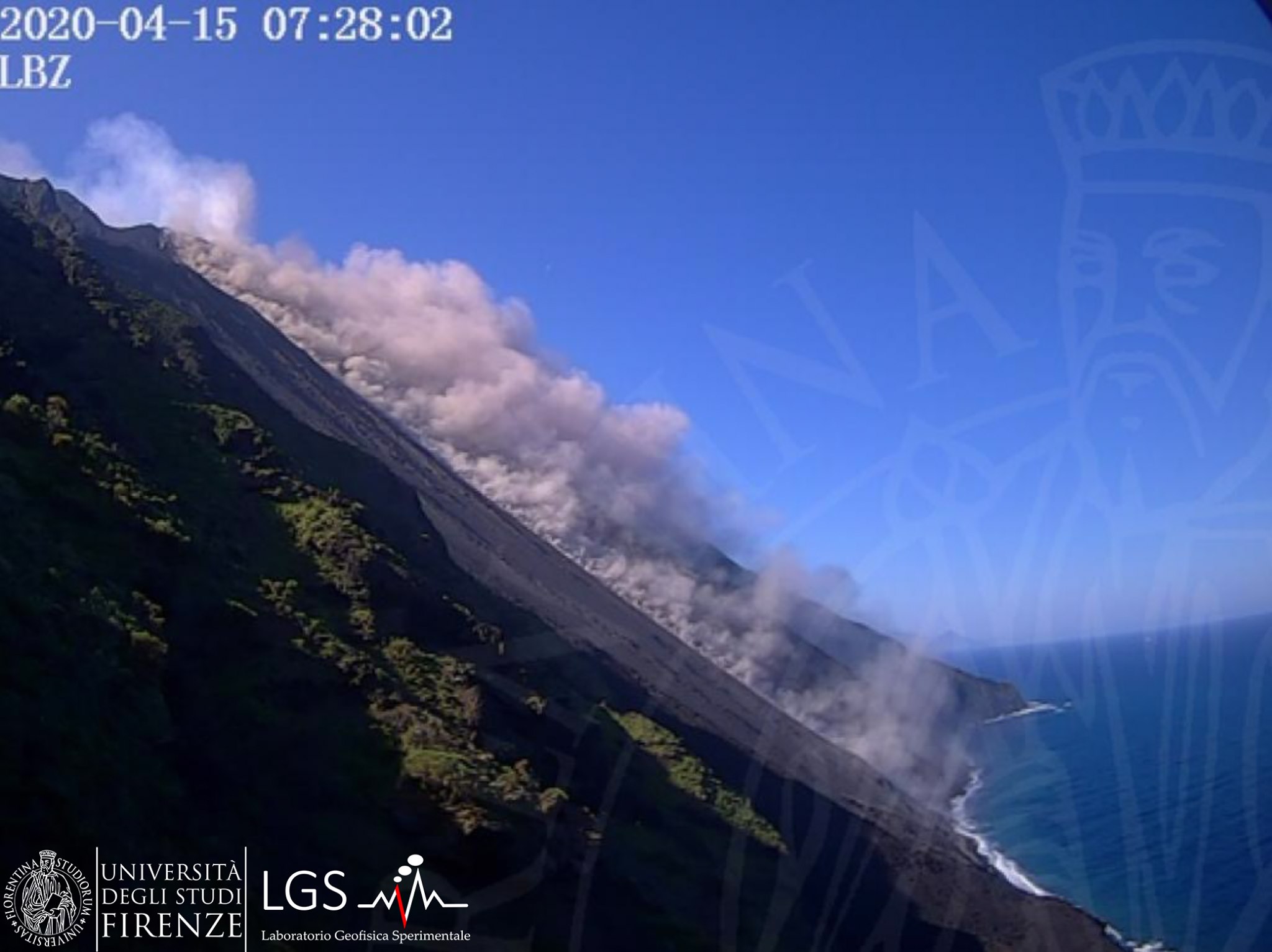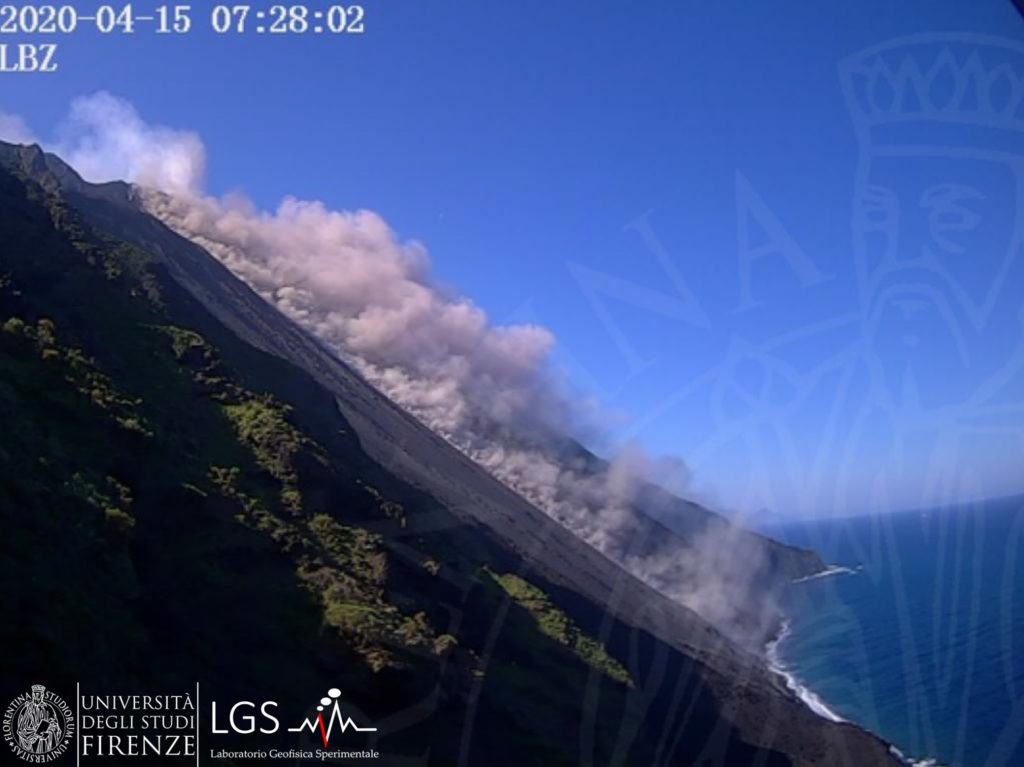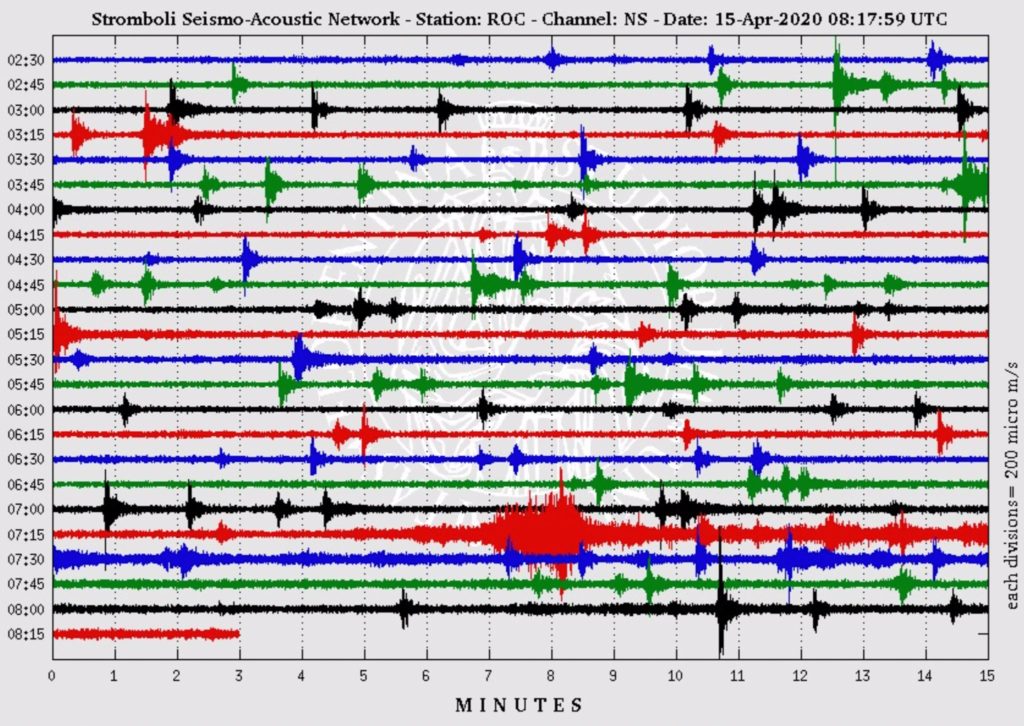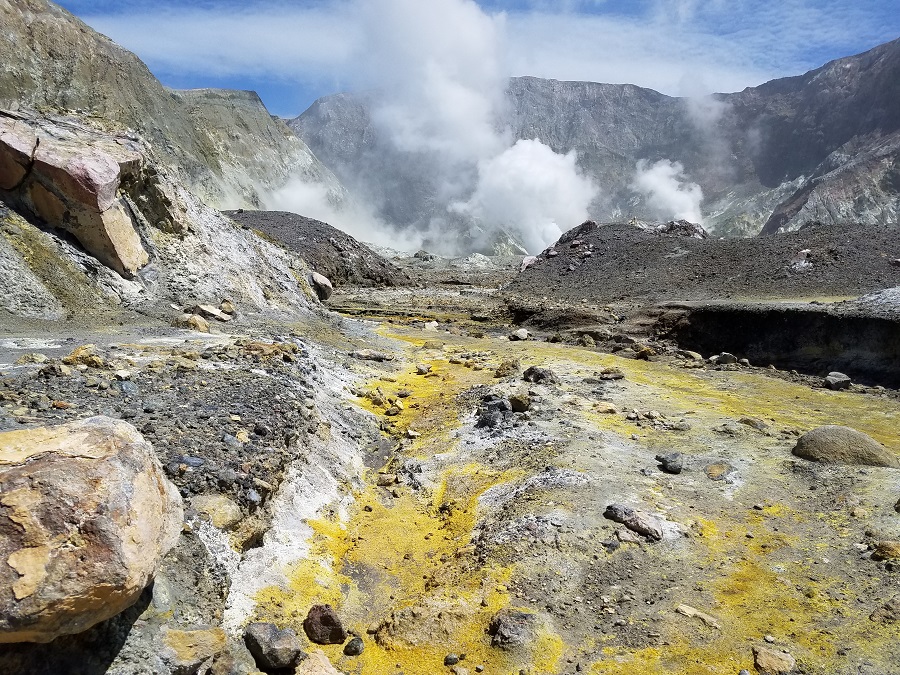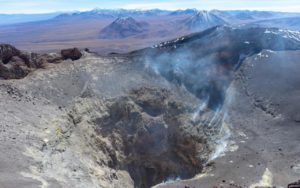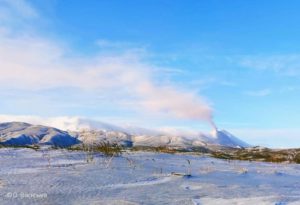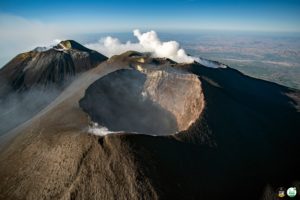April 16 , 2020 .
Colombia : Nevado del Ruiz ,
Weekly activity bulletin of the Nevado del Ruiz volcano
The level of activity continues at the level of yellow activity or (III): changes in the behavior of volcanic activity.
With regard to monitoring the activity of the Nevado del Ruiz volcano, the COLOMBIAN GEOLOGICAL SERVICE reports that:
The seismicity linked to the dynamics of the fluids, inside the volcanic conduits, presented an increase in terms of number of events and seismic energy released, compared to the previous week. This seismic activity was characterized by the occurrence of continuous volcanic tremors, tremor pulses, earthquakes of the long period type and of the very long period type. These earthquakes exhibited varying energy levels and spectral content. Some of these signs were associated with small emissions of gas and ash, which were confirmed by cameras installed in the volcano area, by reports from officials of the Los Nevados National Natural Park in the region and by notifications from the Washington VAAC (Volcanic Ash Advisory Center).
The seismicity generated by the fracturing of the rocks showed a slight decrease in the number of earthquakes and an increase in the seismic energy released, compared to the previous week. This type of seismicity was mainly located in the Arenas crater and in the South-South-West, North-West and North-East sectors of the volcano, at depths varying between 0.3 and 6.3 km. The maximum magnitude recorded during the week was 1.2 ML (local magnitude) corresponding to the earthquake recorded on April 12 at 5:16 p.m. (local time), located 2.5 km south of the Arenas crater, at 3, 1 km deep.
The occurrence of several seismic events of the « drumbeat » type, earthquakes associated with the fracturing of rocks, on April 9, 10 and 12 is highlighted. These episodes were characterized by their low energy level and most of them were not localizable. Localizable events were presented in the Arenas crater at depths between 1.5 and 2.0 km. This type of seismicity is linked to the process of ascension and evolution of domes on the surface of a volcano.
By monitoring the information provided on the Mirova and NASA FIRMS web portals, low energy thermal anomalies on the volcano have been reported in the past week.
Source : SGC.
Italy , Stromboli :
PRESS RELEASE ON VOLCANIC ACTIVITY from April 15, 2020 at 07:46:37 UTC (09:46:37 LOCAL HOURS) – STROMBOLI.
The National Institute of Geophysics and Volcanology, Etnean Observatory, communicates that from 07.23 h UTC approximately, the surveillance cameras observe a lava overflow of the North zone of the crater terrace of Stromboli. From the overflow front stands out glowing blocks that roll along the Sciara del Fuoco.
PRESS RELEASE ON VOLCANIC ACTIVITY FROM 04/15/2020 AT 9:00 AM UTC (11:00 LOCAL TIME).
It is reported that at 07:22 hours UTC, the geophysical monitoring network of the experimental geophysics laboratory #LGS of the department of earth sciences of the University of Florence recorded a very wide seismic signal, comparable in amplitude and frequency at the signal recorded on March 31 which had accompanied a small lava overflow. The signal is associated with a significant debris phenomenon along the Sciara del Fuoco (see attached figures) of about 20 minutes, responsible for a rapid increase in the seismic tremor.
The depth of the VLP seismic source is compatible with a magmatic column which has been very shallow for weeks. The VLP seismic signals remain at very high values. Explosive activity in the northeast crater area, which had increased over the past week, quickly decreased overnight, starting at 11:00 p.m. UTC yesterday.
In addition, it is stated that the C / S ratio has been established at very low levels (around 2). These values, indicative of a very superficial degassing source, are comparable to those recorded during the phases preceding the effusive eruptions of 2007 and 2014. The flow of SO2 remains low for technical problems linked to the optics of UV cameras and to the system. telemetry.
The seismic signal is not accompanied by a deformation of the ground.
Labronzo LBZ’s camera indicates that this phenomenon is still in progress, even if it has decreased significantly in the past hour.
Source : INGV. LGS – Laboratorio Geofisica Sperimentale .
Indonesia , Semeru :
VOLCANO OBSERVATORY NOTICE FOR AVIATION – VONA.
Issued: April 16 , 2020
Volcano: Semeru (263300)
Current Aviation Colour Code: ORANGE
Previous Aviation Colour Code: orange
Source: Semeru Volcano Observatory
Notice Number: 2020SMR25
Volcano Location: S 08 deg 06 min 29 sec E 112 deg 55 min 12 sec
Area: East java, Indonesia
Summit Elevation: 11763 FT (3676 M)
Volcanic Activity Summary:
Eruption with volcanic ash cloud at 02h04 UTC (09h04 local).
Volcanic Cloud Height:
Best estimate of ash-cloud top is around 13043 FT (4076 M) above sea level, may be higher than what can be observed clearly. Source of height data: ground observer.
Other Volcanic Cloud Information:
Ash cloud moving to Southwest
Remarks:
Seismic activity is characterized by eruption, avalanche and gas emission earthquakes.
Level II activity level (WASPADA). The Semeru volcano (3676 m above sea level) is experiencing a continuous eruption. The last eruption occurred on April 13, 2020.
The volcanoes are clearly visible until it is covered with fog. No smoke comes out of the crater. The weather is sunny to rainy, the winds are light to moderate towards the North, the North-East, the East and the South.
According to the seismographs of April 15, 2020, it was recorded:
39 eruption earthquakes
1 avalanche earthquake
39 earthquakes of explosions
1 local tectonic earthquake
2 deep tectonic earthquakes
Recommendation:
The community does not carry out activities within a radius of 1 km and in the area up to 4 km in the South-South-East slope sector which is an opening area of the active crater of G.Semeru (Jongring Seloko) as a channel for sliding warm clouds.
Be aware of the presence of the lava dome in the Seloko Jongring crater.
Source : Magma Indonésia , PVMBG.
Photo : @visit.pronojiwo.
New Zealand , White Island :
Whakaari/White Island: Elevated volcanic unrest continues
Volcanic Alert Level remains at 2
Aviation Colour Code remains at Yellow
Whakaari/White Island remains in an elevated state of unrest. No significant changes in the amount of volcanic gas emitted or seismic activity were recorded in March-April. The Volcanic Alert Level remains at Level 2; Aviation Colour Code remains at Yellow.
During lockdown (COVID-19 Level 4), we have continued the monitoring of Whakaari/White Island with the instrumentation that automatically sends us data. These are primarily the seismic and SO2 gas sensors data, and images from our web cameras. Over the weekend there were public reports of heightened steam activity, but we can confirm there were no eruptions; just the nice weather allowed people to better see the volcanic gas plume. We have not conducted further aerial-based measurements and observations of the volcano in the past three weeks.
The remotely transmitted gas data from the sensors suggests no significant changes in SO2 output compared with what we saw in March. The volcano continues to emit SO2 gas, which is derived from magma (molten rock at shallow depth), and is one of our main indicators of volcanic unrest. Emission rates for other gases have not been measured over the past few weeks as we scaled down non-essential field visits during the COVID-19 lockdown. Seismic activity remains at lower levels and continues to fluctuate over periods of hours or days.
Although the web cameras are still partially covered by ash from the December eruption, and in need of a clean, the recent rain has helped. The layout of the active vent areas appears to be mostly unchanged since early March. We continue to see evidence of high temperatures at night, but no changes in the locations of these heat sources are apparent.
The active vent area remains a dynamic environment and an eruption could occur with little precursory activity. Plausible triggers for an eruption remain the collapse of unstable material around the vents, sudden release of gas from the magma, and the rapid ingress of water onto the shallow magma body.
Should any explosive activity produce an ash cloud, the likelihood of ash affecting the mainland remains very low. Under suitable weather conditions, the gas and steam plume may be noticed on the mainland as weak acid rain.
GNS Science and our National Geohazards Monitoring Centre continue to closely monitor Whakaari/White Island for further signs of activity. Further updates will be provided as needed.
Source : Geonet / Steven Sherburn / Duty Volcanologist.
Photos : May 12, 2019 (Image credit: Satellite image ©2019 Maxar Technologies) , Weatherboy

